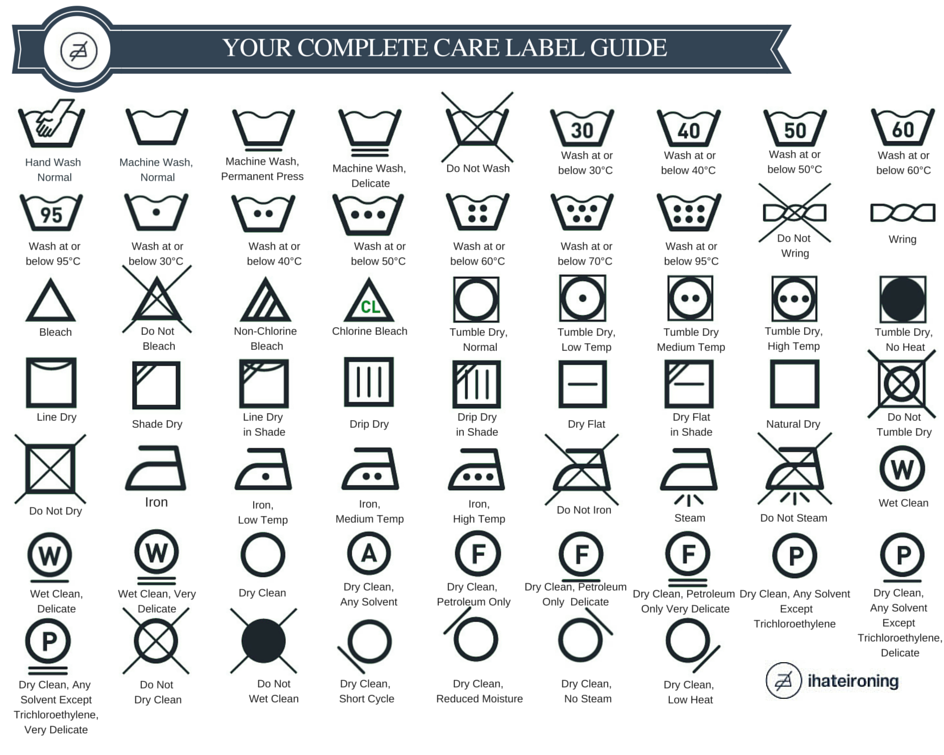When it comes to doing laundry, I used to feel like I needed a secret decoder ring just to understand the care labels on my clothes. I would stare at those tiny symbols, trying to decipher what they meant, only to end up throwing everything in the washing machine and hoping for the best. But after ruining a few favorite pieces, I knew I needed to take a more informed approach. So, I set out on a mission to decode those garment care symbols and understand what they really meant.
First things first, let’s talk about why care labels are so important. They provide essential information about how to best care for and maintain our clothes, ensuring that they last longer and look their best. These labels are typically sewn into the inside seam of a garment, and they contain a series of symbols that represent different care instructions. By understanding these symbols, we can make more informed decisions about how to wash, dry, and care for our clothes.
One of the most common symbols we encounter is the washing symbol. It looks like a small bucket filled with water and is usually accompanied by a number inside. This number indicates the maximum temperature at which the garment can be washed. For instance, if the symbol has a 30 inside, it means that the item should be washed at a maximum temperature of 30 degrees Celsius. It’s crucial to pay attention to this symbol because washing clothes at temperatures higher than recommended can lead to shrinkage or color fading.
Next up is the drying symbol, which looks like a square with a circle inside. This symbol tells us how to dry the garment and at what temperature. If you see a dot inside the circle, it means that the item can be tumble dried. The number of dots corresponds to the heat level, with one dot being low heat and three dots being high heat. However, if you see a cross through the drying symbol, it means that the garment should not be tumble dried. Hanging it to dry or laying it flat are usually better alternatives in such cases.
Ironing instructions are typically represented by a symbol that looks like an iron. The dots inside the iron symbol indicate the maximum temperature that can be used when ironing the garment. One dot means low heat, two dots mean medium heat, and three dots mean high heat. If you see a cross through the iron symbol, it means that the item should not be ironed. Instead, consider steaming or using a lower heat setting on your iron.
Now, let’s talk about some additional symbols that you may come across. The triangle symbol represents bleaching instructions. If the triangle is empty, it means that the garment can be bleached using any type of bleach. However, if there are lines within the triangle, it indicates that only non-chlorine bleach should be used or that bleaching is not recommended at all. It’s essential to follow these instructions to prevent color fading or damaging the fabric.
Another symbol to keep an eye out for is the circle with a letter inside it. This symbol represents dry cleaning instructions. A letter in the circle indicates which solvents can be used, so it’s important to consult with a professional dry cleaner who can handle the specific requirements of your garment.
In addition to these common symbols, there may be others specific to certain types of clothes or fabric compositions. For instance, a crossed-out circle symbolizes that the item should not be washed or cleaned using water. Instead, dry cleaning or other specialized methods may be required. It’s crucial to pay attention to these unique symbols to avoid damage or deterioration of the garment.
Understanding these care labels has completely changed the way I approach laundry. I no longer throw everything in the washing machine without thinking twice. Instead, I take a moment to read and interpret the care symbols, ensuring that each piece of clothing receives the proper care it deserves.
So, the next time you’re faced with a pile of clothes and a bunch of care labels, don’t panic. Take a moment to decode those symbols and follow the instructions carefully. Your clothes will thank you by lasting longer, looking better, and staying in great condition for years to come.







